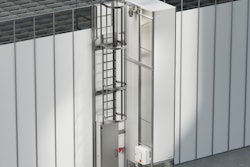
In 2024, new industrial occupancies in bulk space rose to 307 million square feet, a 1.5% increase from 2023, according to research released by Colliers. Users moved into 1,160 spaces of 100,000 square feet or greater during the year, up from 1,042 the previous year. Bulk occupancies grew as the year progressed, reaching 156 million square feet in the second half — 3% higher than in the first half of 2024.
This growth indicates a rebound in demand for industrial space following a sharp decrease between 2022-2023. While the average lease size has decreased, the overall number of transactions increased year-over-year.
Key takeaways:
- Though manufacturing, fabrication, and materials processing accounted for 14% of bulk occupancies in 2024 and saw a slight year-over-year decline, demand from manufacturing users is expected to rise in 2025.
- Demand for industrial bulk space rebounded in 2024, with total occupancies increasing, despite a decline in average lease size. This signals a market recovery following a slowdown in 2023.
- The Southeast led in year-over-year growth, with bulk occupancies rising 16% to 63 million square feet. The West had the most activity, with 370 users moving into 95 million square feet, up 4.2%. The Northeast grew 13%, while the Midwest and South Central saw declines.
- Demand is shifting toward smaller bulk spaces, with occupancies under 500,000 square feet growing—especially in the 300,000- to 499,999-square-foot range (up 23%). Meanwhile, spaces over 500,000 square feet saw declines, with those 750,000 square feet and larger dropping 26%, continuing a post-pandemic trend of tenants opting for less space.
- Third-party logistics (3PL), trucking, and transportation companies dominated new bulk occupancies in 2024, accounting for 33% and growing to 101 million square feet. Asian-based 3PLs played an increasing role, making up 27% of this segment.
“Tenant demand is expected to continue evolving in 2025, with third-party logistics providers, transportation companies, and manufacturers driving leasing activity,” says Craig Hurvitz, director, national industrial research for Colliers. “While demand is unlikely to reach the record highs of 2021 and 2022, a gradual return to near pre-pandemic levels is anticipated.”
“Some markets have stabilized following a surge in new supply, while others continue to face high vacancy rates and supply-side pressures,” he adds. “As demand rebuilds and construction activity returns to pre-pandemic levels below 300 million square feet, the U.S. industrial market will undergo a recalibration in 2025., although it will remain segmented as some markets take longer to balance than others.”

















